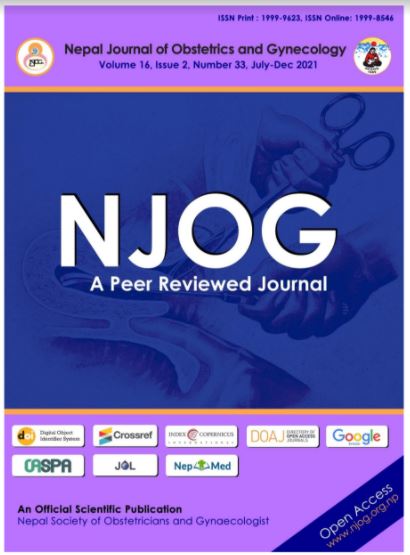Incidence and risk factors of perineal tears of pregnant women delivering at a midwife obstetric unit South Africa
Keywords:
episiotomy, low risk pregnancy, midwife obstetric unit, South AfricaAbstract
Aim: To estimate the incidence and risk factors for perineal tears of low-risk pregnant women delivering at a midwife obstetric unit.
Methods: A retrospective study performed on perineal tear during childbirth from birth register at midwife run unit in Durban municipality, South Africa between January 2018 and October 2019. Risk factors were studied and bivariate and logistic regression done. Results are expressed with adjusted odds ratios (OR) and p-values <0.05 are considered significant.
Results: A total of 1578 women had singleton vaginal childbirths. Half (50.6%) of them have perineal tears. The incidences of episiotomy, combined first-and second, and third-and fourth- degree (OASI) tears are 24.3%, 25.1% and 1.1% respectively. Risk factors for any perineal tears are younger mothers (teenage OR=2.9, 20-24 years OR=2.2), primipara (OR= 15.8), received antenatal care (OR=.47) and gestational age (GA) (<32 weeks OR=.05). The risk factors for episiotomy are; teenage (OR=5.4), ages 20-24 years (OR=4.2), ages 25-29 years (OR=3.0), primipara (OR=12.4), GA (£32 weeks OR=.16), GA 33-36 weeks (OR=.6) and having antenatal care (OR=.41). Birth weight <2.5 kg and between 2.5-3.0 kgs (OR=.014) and (OR=.09) are protective for OASI.
Conclusions: Risk factors for the perineal injuries are similar to those previously reported in other studies. Training of midwives on perineal care and selection for undertaking episiotomy is urgently needed to improve maternity services at the midwife obstetric unit. Identification of those at risk may reduce obstetric perineal injury.
Downloads
Downloads
Published
How to Cite
Issue
Section
License
Copyright (c) 2022 Akm Monjurul Hoque, Somaya Buckus

This work is licensed under a Creative Commons Attribution-NonCommercial 4.0 International License.
Copyright on any research article in the Nepal Journal of Obstetrics and Gynaecology is retained by the author(s).
The authors grant the Nepal Journal of Obstetrics and Gynaecology a license to publish the article and identify itself as the original publisher.
Articles in the Nepal Journal of Obstetrics and Gynaecology are Open Access articles published under the Creative Commons CC BY-NC License (https://creativecommons.org/licenses/by-nc/4.0/)
This license permits use, distribution and reproduction in any medium, provided the original work is properly cited, and it is not used for commercial purposes.



